| View previous topic :: View next topic |
| Author |
Message |
Sante Celiberti
Joined: 04 Oct 2019
Posts: 699
Location: Tuscany



|
 Posted: Apr 19, 2020 18:58 Post subject: Pyrite scepters? Posted: Apr 19, 2020 18:58 Post subject: Pyrite scepters? |
|
|
When, a few tens of yeras ago, I ran into this pyrite I suspected it was a scepter but, having no feedback, I abandoned the idea.
Later accidentally I discovered another crystal where the phenomenon was even more evident. Since than I focused my attention on the research of these crystals to have a documented confirmation of the existence of pyrite scepters.
In the crystals that I have collected, some from Gavorrano but most from Elba island, the phenomenon is more or less evident; but there are always the conditions to affirm that we are in the presence of a scepter: a growth, on (or near) the termination of an existing crystal, of a new crystal whose faces are parallel to those of the underlying crystal (stem).
All comments and contributions are welcome, as well as the reporting of other pyrite scepters.
Best regards.
Sante
| Mineral: | Pyrite, Hematite |
| Locality: | | Rio Marina, Elba Island, Livorno Province, Tuscany, Italy |  |
|
| Dimensions: | 124 x 132 x 142 mm |
| Description: |
| A huge, complete crystal covered by a thin layer of Hematite. A new generation of Pyrite deposited a thick, lustrous and sharp layer of mineral in a strangely incomplete (preferential?) way. |
|
| Viewed: |
14230 Time(s) |
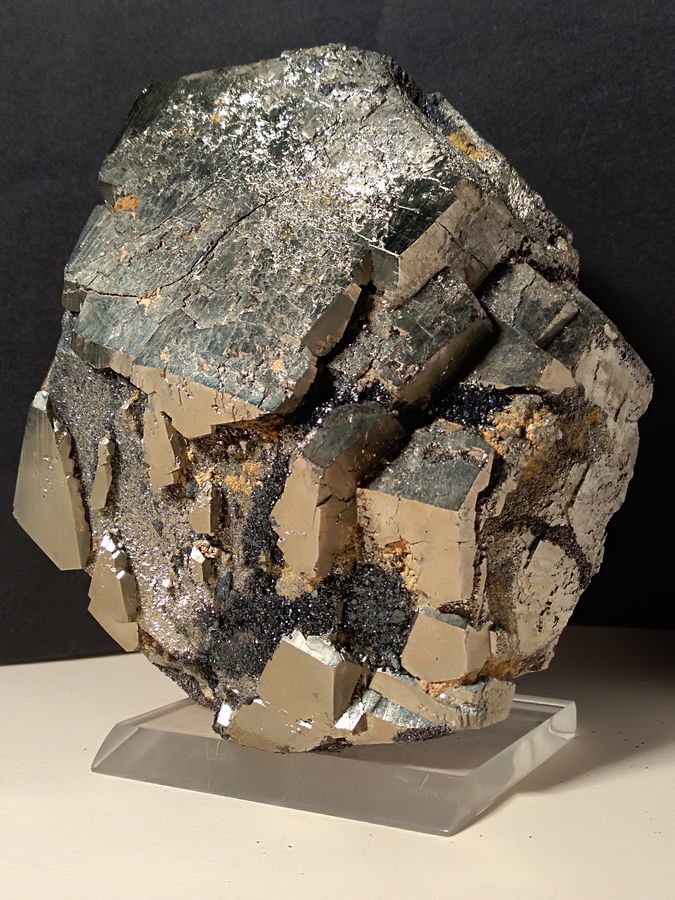
|
| Mineral: | Pyrite, Hematite |
| Locality: | | Rio Marina, Elba Island, Livorno Province, Tuscany, Italy |  |
|
| Dimensions: | 124 x 132 x 142 mm |
| Description: |
|
| Viewed: |
14224 Time(s) |
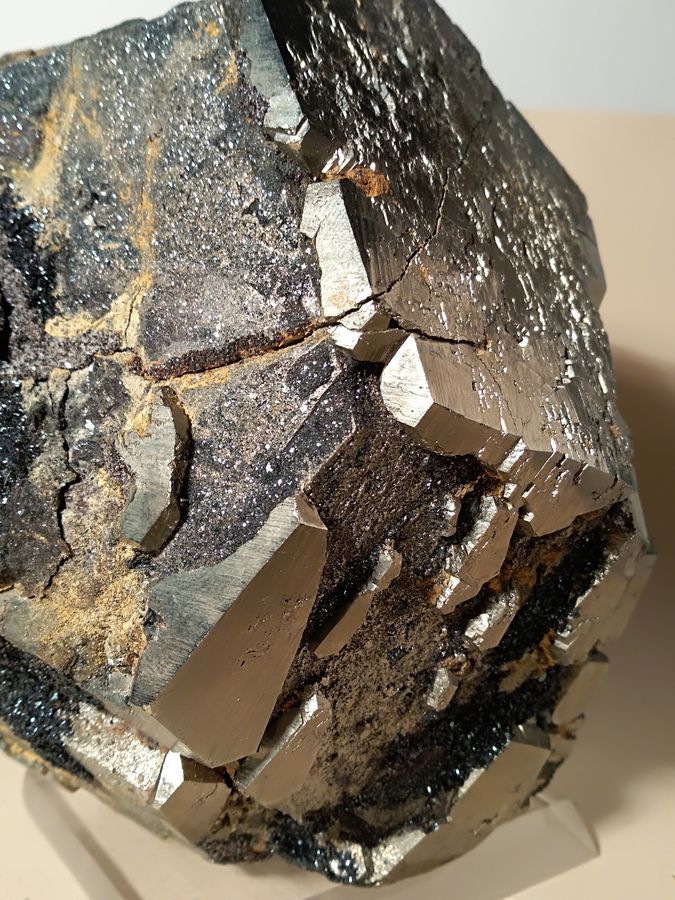
|
| Mineral: | Pyrite, Hematite |
| Locality: | | Rio Marina, Elba Island, Livorno Province, Tuscany, Italy |  |
|
| Dimensions: | 124 x 132 x 142 mm |
| Description: |
|
| Viewed: |
14262 Time(s) |
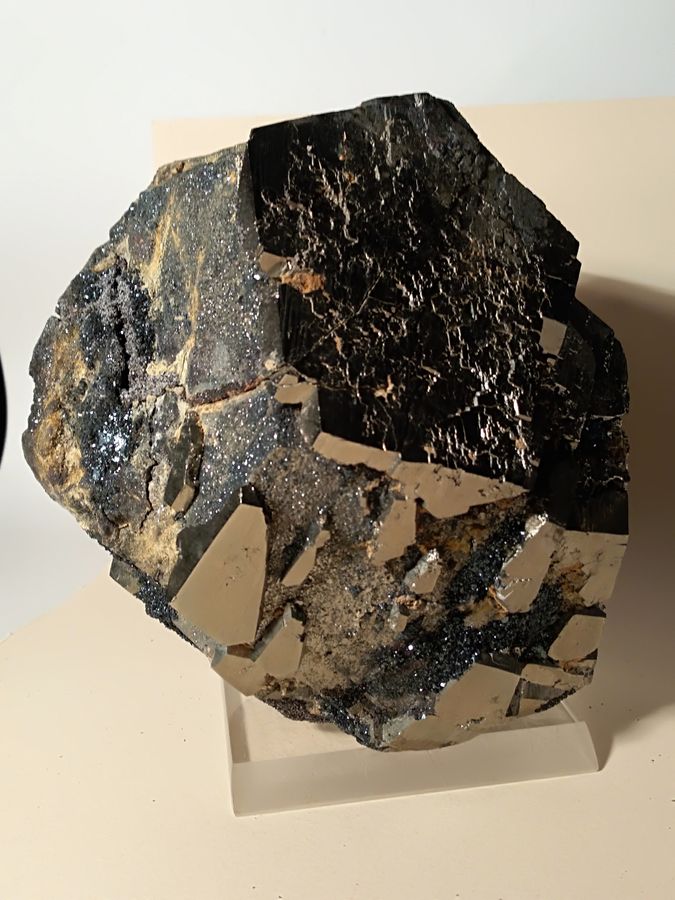
|
| Mineral: | Pyrite, Hematite |
| Locality: | | Rio Marina, Elba Island, Livorno Province, Tuscany, Italy |  |
|
| Dimensions: | 35-55 mm |
| Description: |
| I've noticed, at list in pyrite scepters from Elba, that there is (or was) always a layer of Hematite between the underlying crystal and the overgrown one. |
|
| Viewed: |
14236 Time(s) |
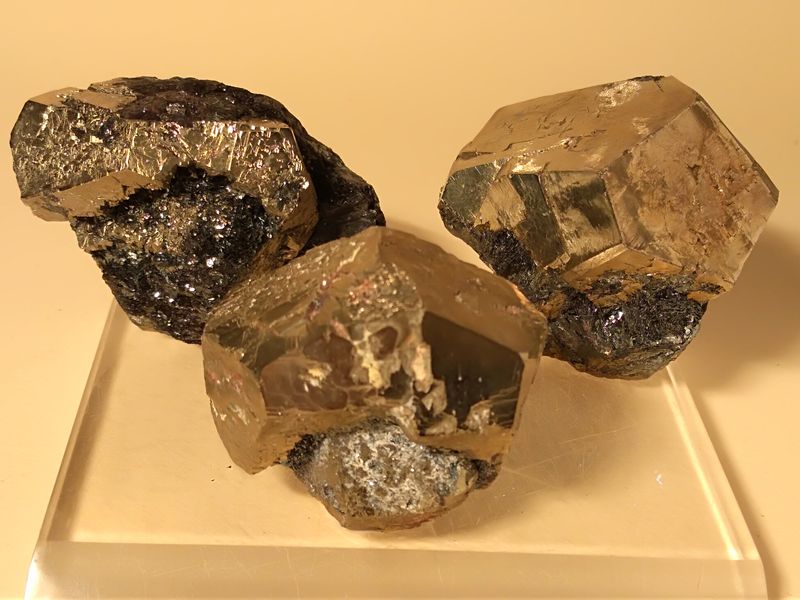
|
| Mineral: | Pyrite, Hematite |
| Locality: | | Rio Marina, Elba Island, Livorno Province, Tuscany, Italy |  |
|
| Dimensions: | 35 mm |
| Description: |
| In this crystal the stem and the scepter are clearly recognizable, as well as the faces parallelism. |
|
| Viewed: |
14228 Time(s) |
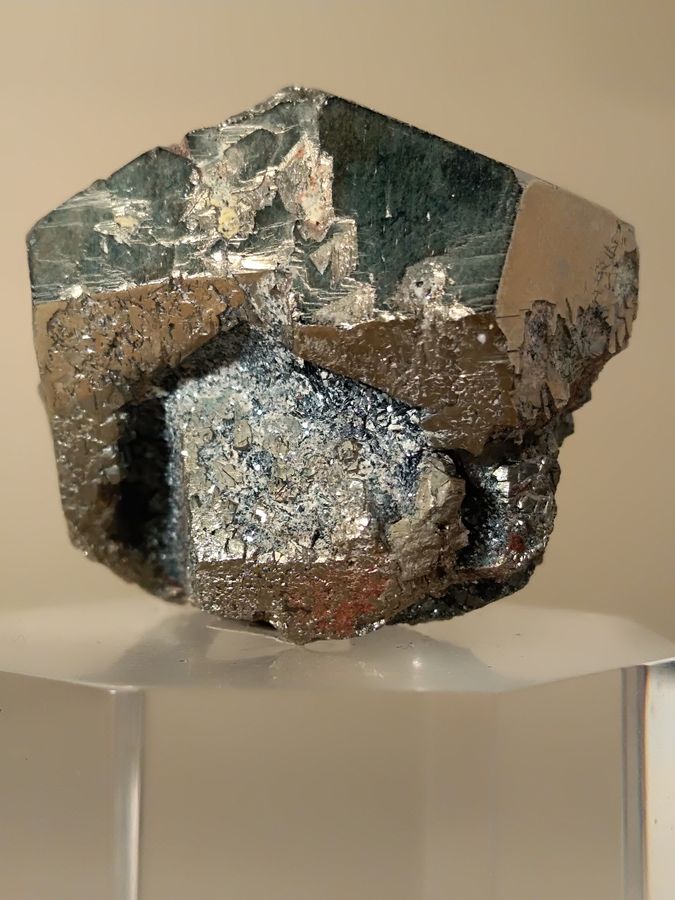
|
|
|
| Back to top |
|
 |
Tobi
Site Admin
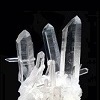
Joined: 07 Apr 2009
Posts: 4235
Location: Germany



|
 Posted: Apr 20, 2020 01:46 Post subject: Re: Pyrite scepters? Posted: Apr 20, 2020 01:46 Post subject: Re: Pyrite scepters? |
|
|
| Sante Celiberti wrote: | | [...] All comments and contributions are welcome, as well as the reporting of other pyrite scepters. |
Never heard of scepters on isometric crystals. But since I'm not good at crystallography, I can only comment and contribute that I find these pyrites really interesting :-)
|
|
| Back to top |
|
 |
Sante Celiberti
Joined: 04 Oct 2019
Posts: 699
Location: Tuscany



|
 Posted: Apr 20, 2020 11:09 Post subject: Re: Pyrite scepters? Posted: Apr 20, 2020 11:09 Post subject: Re: Pyrite scepters? |
|
|
Here some samples more from Gavorrano mine.
I would like comments and experts opinion. Thank you.
Stay safe.
Sante
| Mineral: | Pyrite |
| Locality: | | Gavorrano Mine, Gavorrano, Grosseto Province, Tuscany, Italy |  |
|
| Dimensions: | 2,5-3,5 mm |
| Description: |
| Pyrite scepters ? The three specimens are floater. |
|
| Viewed: |
14085 Time(s) |
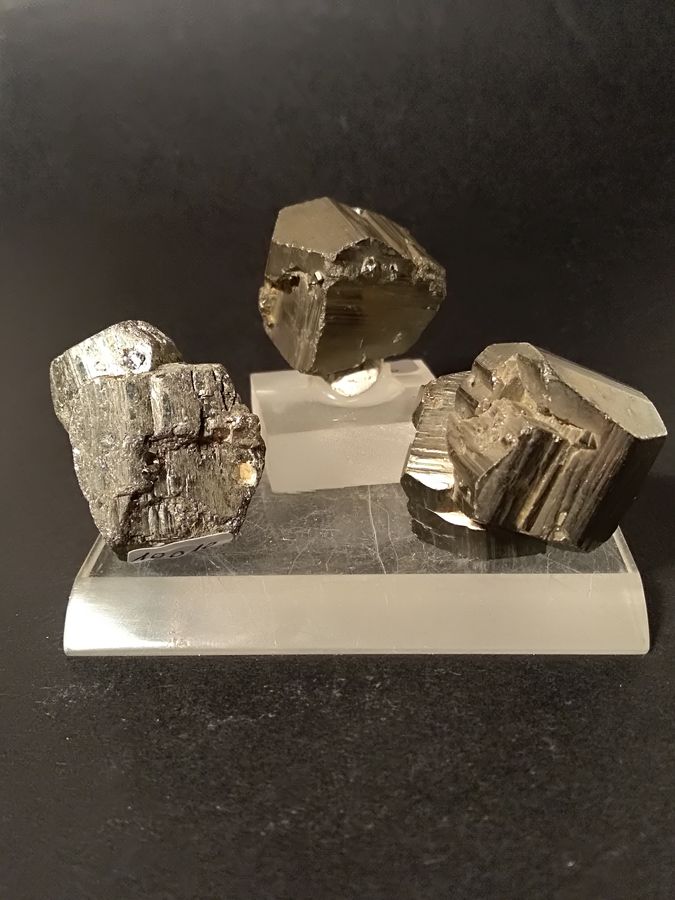
|
| Mineral: | Pyrite |
| Locality: | | Gavorrano Mine, Gavorrano, Grosseto Province, Tuscany, Italy |  |
|
| Dimensions: | 3,5 mm |
| Description: |
Question:
Even assuming an interrupted growth, due to a lack of mineral or a form of inhibition, is not the classic quartz scepter an interrupted growth of a second crystal on the first?
Only in the case of an etching/dissolution, like in tourmalines and beryls, the resulting scepter shapes might not be considered as such, since they aren't the result of overgrowth. |
|
| Viewed: |
14078 Time(s) |
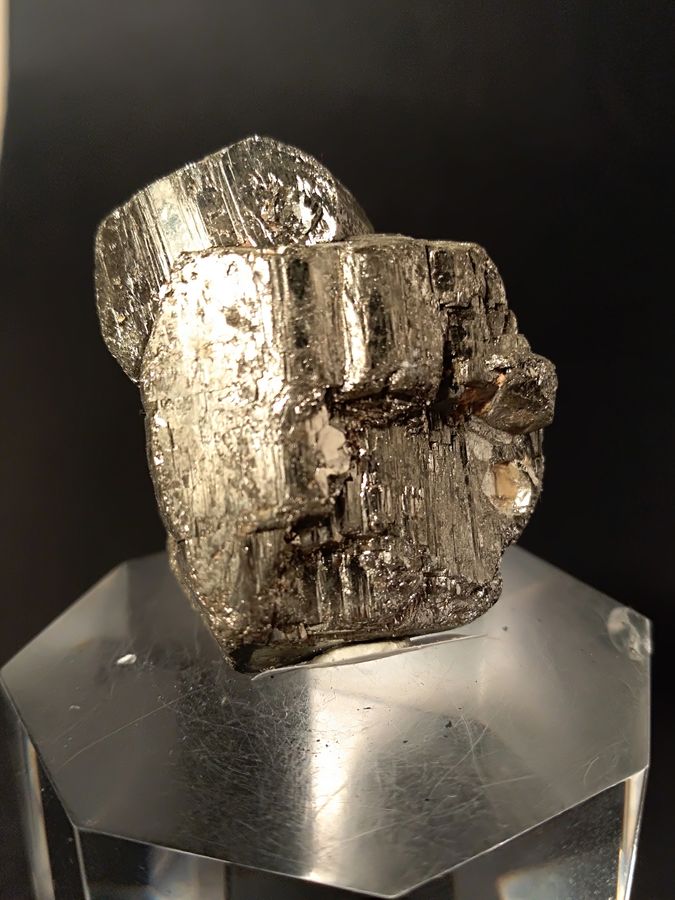
|
| Mineral: | Pyrite |
| Locality: | | Gavorrano Mine, Gavorrano, Grosseto Province, Tuscany, Italy |  |
|
| Dimensions: | 3,5 mm |
| Description: |
These crystals have an intermediate habit between cubic and dodecahedral. The biggest one envelops another, respecting the parallelism of the faces.
A final scarce deposition was just able to build some tiny crystals on both "stem" and "scepter". |
|
| Viewed: |
14082 Time(s) |
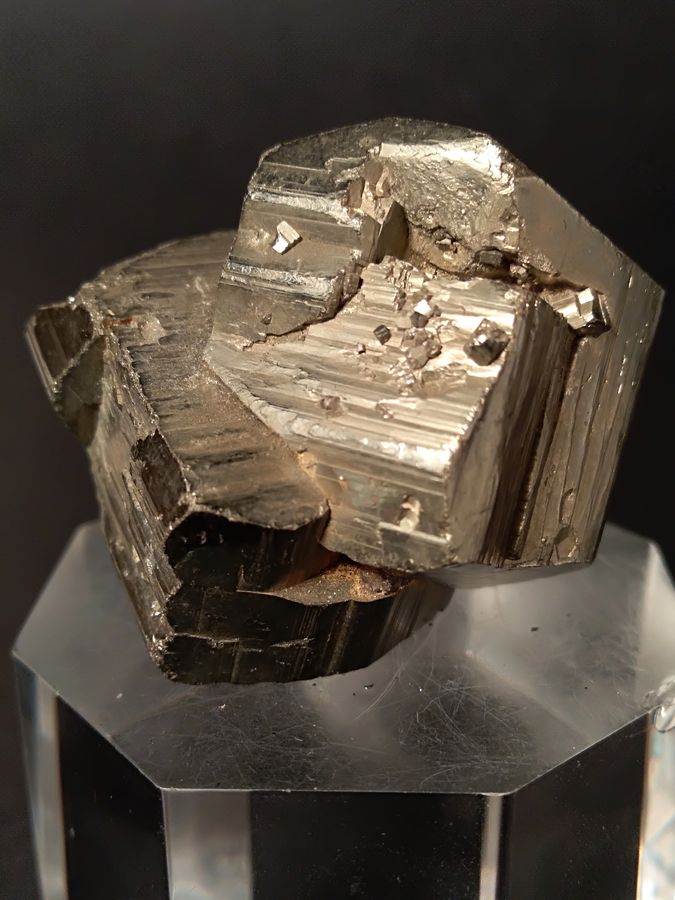
|
| Mineral: | Pyrite |
| Locality: | | Gavorrano Mine, Gavorrano, Grosseto Province, Tuscany, Italy |  |
|
| Dimensions: | 2,5 |
| Description: |
| This is the oddest of three: a dodecahedral (pseudo)-scepter on a cubic (pseudo)-stem. Here the evidence of dodecahedral dominance. |
|
| Viewed: |
14083 Time(s) |
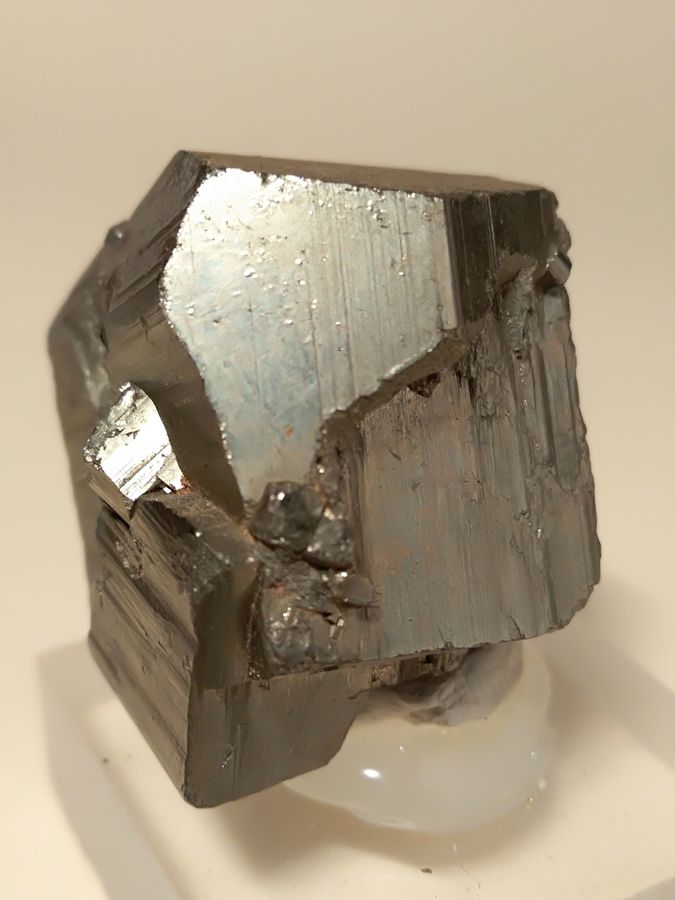
|
| Mineral: | Pyrite |
| Locality: | | Gavorrano Mine, Gavorrano, Grosseto Province, Tuscany, Italy |  |
|
| Dimensions: | 2,5 mm |
| Description: |
Same specimen with the evidence of cubic dominance.
The only parallelism I can see are the cubic modifications on the pentagonal dodecahedron. |
|
| Viewed: |
14058 Time(s) |
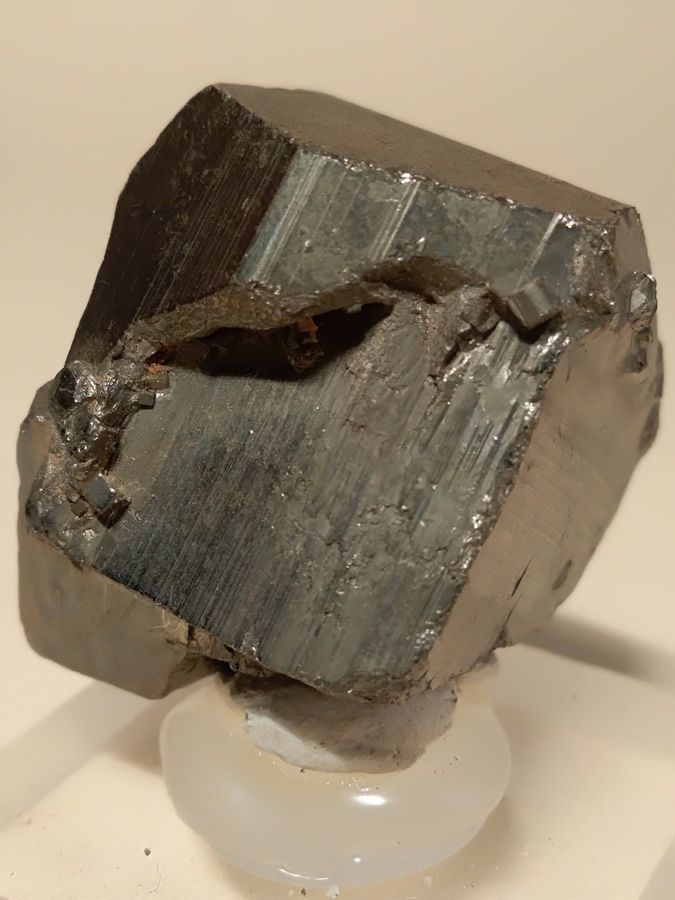
|
|
|
| Back to top |
|
 |
bob kerr

Joined: 13 Nov 2011
Posts: 638
Location: Monroeville PA



|
 Posted: Apr 20, 2020 12:59 Post subject: Re: Pyrite scepters? Posted: Apr 20, 2020 12:59 Post subject: Re: Pyrite scepters? |
|
|
I think this all comes down to your definition of scepter. These look more to me like pyrite on hematite - and some are pyrite on pyrite (secondary growth with slightly different crystal habits). I guess these to me are not scepters in the "quartz sense" but I also will defer to more experienced members.
Pyrite does amazing things - see this link:
https://www.mineral-forum.com/message-board/viewtopic.php?p=37560&highlight=pyrite+pyrite#37560
I attach a photo of what I think can be described as pyrite (dodecahedron) after pyrite (cube) but not a true pseudomorph. This photo is in the link.
bob
| Mineral: | Pyrite after pyrite? |
| Locality: | | Huanzala Mine, Huallanca District, Dos de Mayo Province, Huánuco Department, Peru |  |
|
| Description: |
|
| Viewed: |
14062 Time(s) |
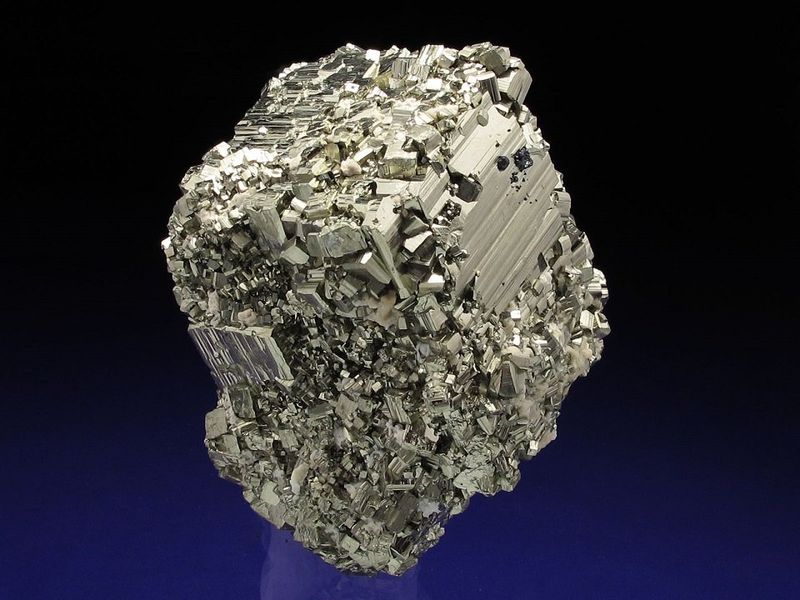
|
|
|
| Back to top |
|
 |
Sante Celiberti
Joined: 04 Oct 2019
Posts: 699
Location: Tuscany



|
 Posted: Apr 20, 2020 17:57 Post subject: Re: Pyrite scepters? Posted: Apr 20, 2020 17:57 Post subject: Re: Pyrite scepters? |
|
|
Hello, Bob. How are you? Thank you for your comment and your contribution. :-)
Here is another example of what I suspect to be pyrite scepters. It seems unequivocal to me but, as you have said well, let's await the opinion of the more experienced members.
As for the pyrite you posted (I also saw the interesting link suggested. Thank you.), I'm sorry to admit I cannot see any pseudomorphosis, either in a mineralogical or etymological sense.
What I see from the photo is a cubic crystal with dodecahedral modifications (the deep triglyph striations on the main cubic face, the bevels near the upper edge of the same face, perhaps the stepped facets in the upper left, unless they are sub-parallel facets of the cube). And then I see a second generation of small randomly grown crystals (any epitaxy, assuming that we can speak of epitaxy between crystals of the same mineral...) with an intermediate habit between the cube and the dodecahedron.
One of my fundamental principles is the "Occam's razor": "Frustra fit per plura quod fieri potest per pauciora", which in our case would sound "Do not prefer a more complex hypothesis when a simpler one is sufficient".
The same principle I'm ready to apply to my pyrite scepters as soon as I get a simpler explanation.
What do you think about it?
Receive a very cordial greeting from Gavorrano.
Sante
| Mineral: | Pyrite, Hematite |
| Locality: | | Rio Marina, Elba Island, Livorno Province, Tuscany, Italy |  |
|
| Dimensions: | 107 x 92 mm |
| Description: |
| The biggest scepter shaped crystal is 73 mm. |
|
| Viewed: |
13997 Time(s) |
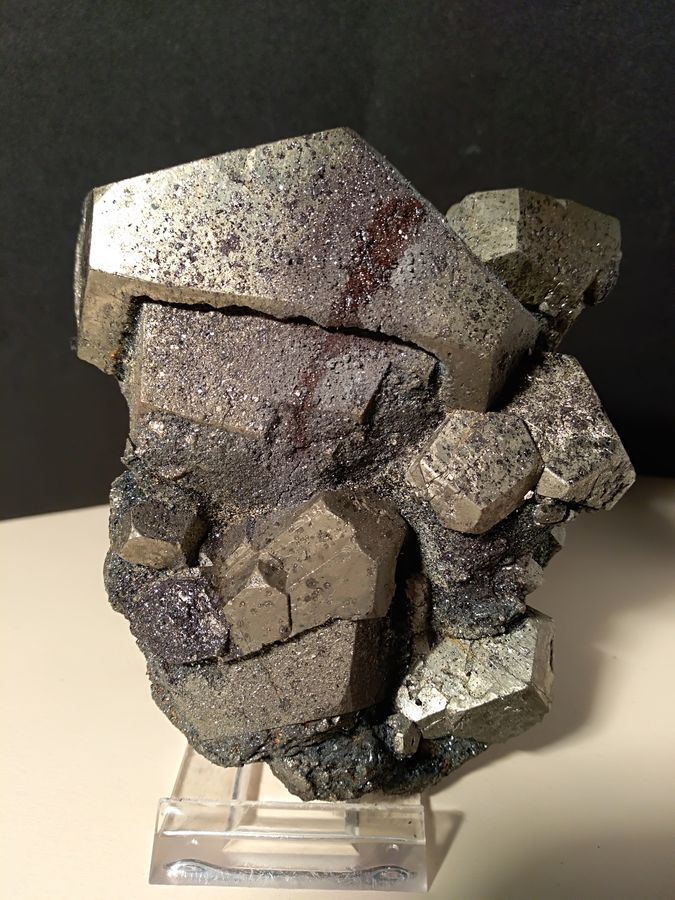
|
| Mineral: | Pyrite, Hematite |
| Locality: | | Rio Marina, Elba Island, Livorno Province, Tuscany, Italy |  |
|
| Dimensions: | 107 x 92 mm |
| Description: |
|
| Viewed: |
13994 Time(s) |
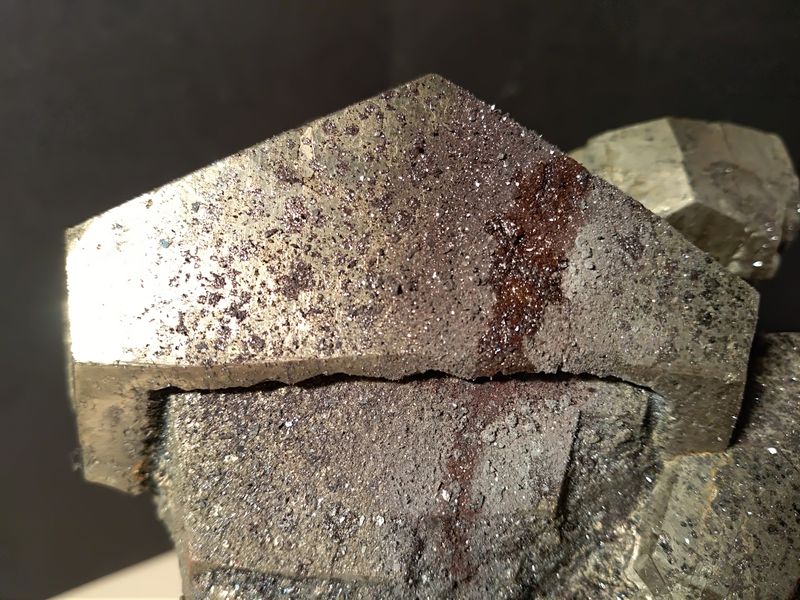
|
|
|
| Back to top |
|
 |
Bob Morgan
Joined: 18 Jan 2018
Posts: 251
Location: Savannah, Georgia



|
 Posted: Apr 22, 2020 15:45 Post subject: Re: Pyrite scepters? Posted: Apr 22, 2020 15:45 Post subject: Re: Pyrite scepters? |
|
|
Sante,
This is your most compelling example. Wonderful!
I have always called these oriented overgrowths. Sceptering would be a subset, which I think of as being an overgrowth at or near the termination of a non isometric crystal, although with no particularly good definition beyond this thought.
As to isometric overgrowths, I share two pictures, one of fluorite and the other similar in nature of pyrite. The fluorite has a disruptive layer on the larger crystal with the overgrowths probably developing off of small uncovered tips, like happens with quartz scepters. The pyrite shows no disruptive layer like yours have.
If you like the term this can be called syntaxy. I prefer oriented overgrowths.
| Mineral: | Pyrite |
| Locality: | | Huanzala Mine, Huallanca District, Dos de Mayo Province, Huánuco Department, Peru |  |
|
| Dimensions: | 6.7x5.6 cm |
| Description: |
| Oriented overgrowths of pyrite on a larger crystal. |
|
| Viewed: |
13860 Time(s) |
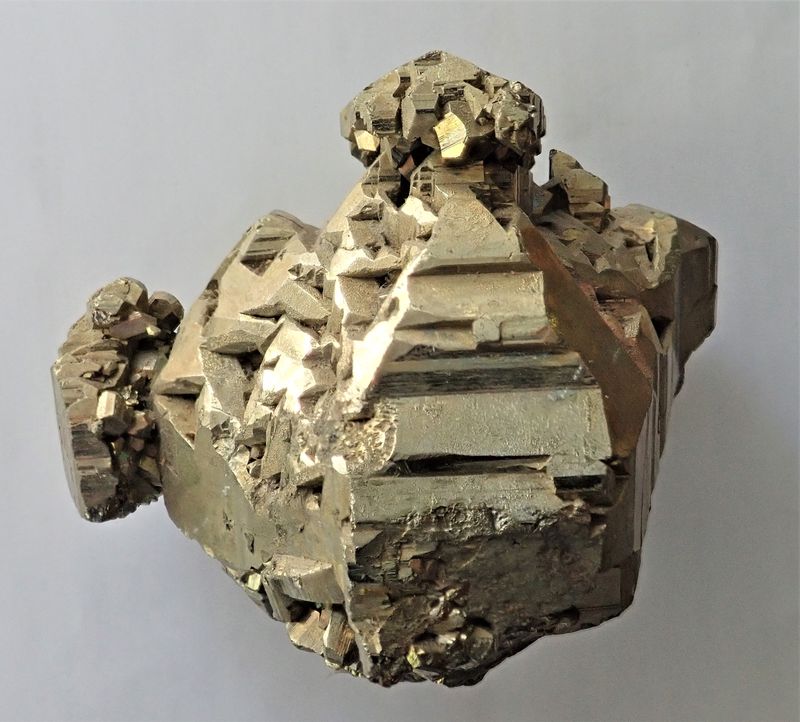
|
| Mineral: | Fluorite |
| Locality: | | Second Sovetskii Mine, Dalnegorsk, Dalnegorsk Urban District, Primorsky Krai, Russia |  |
|
| Dimensions: | 1.5 cm field of view |
| Description: |
| Clear cubes of fluorite on the tips of a fluorite octahedron. |
|
| Viewed: |
13874 Time(s) |
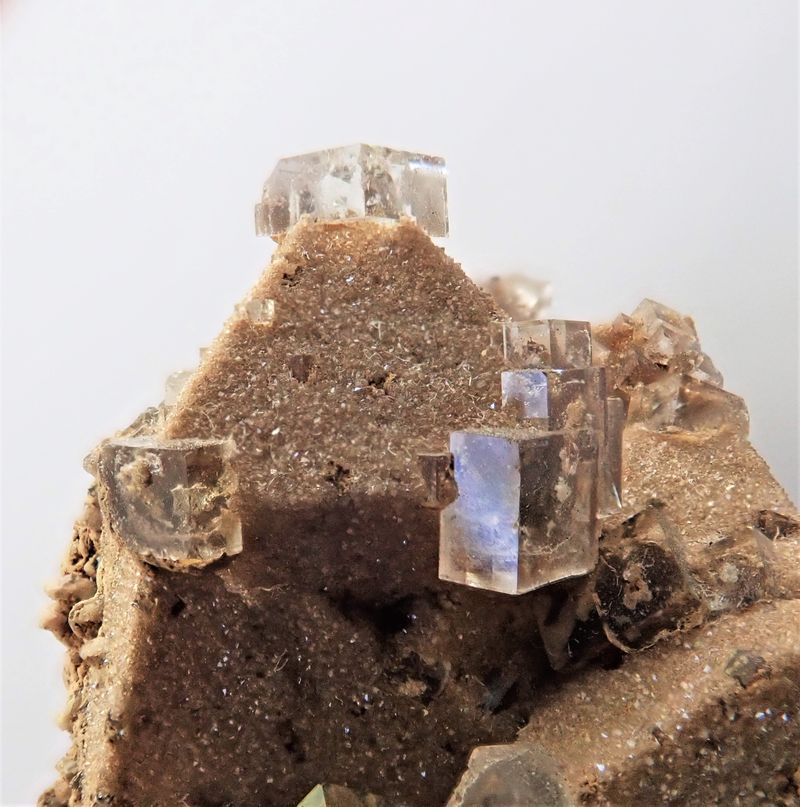
|
|
|
| Back to top |
|
 |
Sante Celiberti
Joined: 04 Oct 2019
Posts: 699
Location: Tuscany



|
 Posted: Apr 22, 2020 16:52 Post subject: Re: Pyrite scepters? Posted: Apr 22, 2020 16:52 Post subject: Re: Pyrite scepters? |
|
|
Hello, Bob.
Thanks for your appreciated comment.
Your specimens are both extremely beautiful as well as educational.
Greetings from Gavorrano.
Sante
|
|
| Back to top |
|
 |
Pete Richards
Site Admin
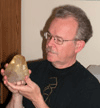
Joined: 29 Dec 2008
Posts: 843
Location: Northeast Ohio



|
 Posted: Apr 22, 2020 16:55 Post subject: Re: Pyrite scepters? Posted: Apr 22, 2020 16:55 Post subject: Re: Pyrite scepters? |
|
|
A couple of comments for my two cents' worth. Bob Morgan and several other commenters have made the main point, which I will re-state in somewhat different terms.
1. "Scepter" is not a mineralogical term; it is a collector's term. As such, it does not have a rigorous definition. But...
2. Generally it means an overgrowth of a mineral on itself, at the end of an elongated crystal. The classic example of course is quartz. As such, the term is mostly and most usefully applied to crystals that have a habit with a long axis, at the end of which a scepter can form. The term, of course, refers to the scepters of rulers and religious leaders, "crowned" staffs that are carried as symbols of the importance of those who carry them.
3. It would normally be expected that the crown of the scepter is in crystallographic alignment with the stem. Exceptions might be things like a quartz crystal "crowned" by a cluster of grossular crystals. Are these scepters? The collectors will decide.
Pyrite is challenged as a scepter mineral because of its equant morphology. Some of the specimens that Sante has shown have one crystal of pyrite capping another of a totally different orientation. Many have overgrowths on different parts of the same crystal, and it appears that growth was halted and its resumption hindered by deposition of another mineral - hematite?
I agree that these pyrite specimens are best described as secondary overgrowths, not scepters.
Incidentally, it is quite common for minerals to have different habits in a second generation than in the first - at least for minerals that have a lot of morphological plasticity like calcite, pyrite, and fluorite (Bob's example). Quartz does not change much from a basic plan - thinner, fatter, secondary faces (s, x, etc) present or missing, etc - but the prism with "pyramidal" termination is standard. This plus its prismatic habit allows the term "scepter" to apply to a large, rather coherent group of crystals.
None of this serves to explain why they occur as scepters - incomplete overgrowths - rather than just crystals with another layer of growth across the whole crystal, maybe revealed as a phantom!
_________________
Collecting and studying crystals with interesting habits, twinning, and epitaxy |
|
| Back to top |
|
 |
Sante Celiberti
Joined: 04 Oct 2019
Posts: 699
Location: Tuscany



|
 Posted: Apr 25, 2020 17:46 Post subject: Re: Pyrite scepters? Posted: Apr 25, 2020 17:46 Post subject: Re: Pyrite scepters? |
|
|
Hello, Pete.
I read your explanation with great interest and pleasure.
Thanks to you and previous commenters, I have clearer ideas about the concept of scepter.
Since it is not a mineralogical term "sensu stricto", I had always mistakenly thought it was a mere syntaxy or autotaxy, leaving out the difference between isometric and non-isometric crystals.
Especially since sometimes in scepter quartz the prism of the primary crystal is so short that the C axis is less than the A axes, although it appear regularly developed in the second generation (the scepter itself). Two examples attached.
I also attach two photos of what I think is a so-called window quartz, where the incomplete crystallografically oriented secondary growth starts from the base of the crystal instead of its termination. Would you call it a scepter?
Thanks again, Pete, for your attention. I remain open to your comments, since (as you already know) I'm an apprendice.
Warm greetings and take care.
Sante
| Mineral: | Quartz (variety scepter) |
| Locality: | | Leshan Prefecture, Sichuan Province, China |  |
|
| Dimensions: | 2,5 cm |
| Description: |
| The complete "stem" is very short compared to the "scepter". The C axis is less than A axes.Despite this, it must be admitted that the image of a scepter is evident. |
|
| Viewed: |
13400 Time(s) |
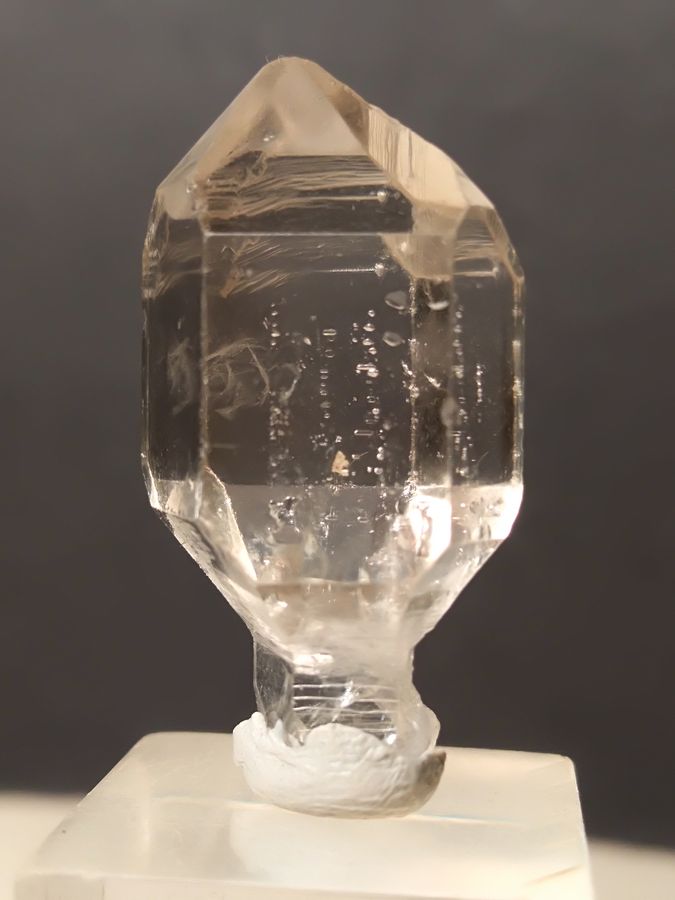
|
| Mineral: | Quartz (variety scepter) |
| Locality: | | Grosseto Province, Tuscany, Italy |  |
|
| Dimensions: | 2 cm |
| Description: |
| The C axis is little developed or almost absent in the first generation of these (non-isometric!) crystals. Perhaps it would be more correct to say that the scepter is very developed compared to the stem.See also how the overgrowth on the main crystal starts from the base. |
|
| Viewed: |
13397 Time(s) |
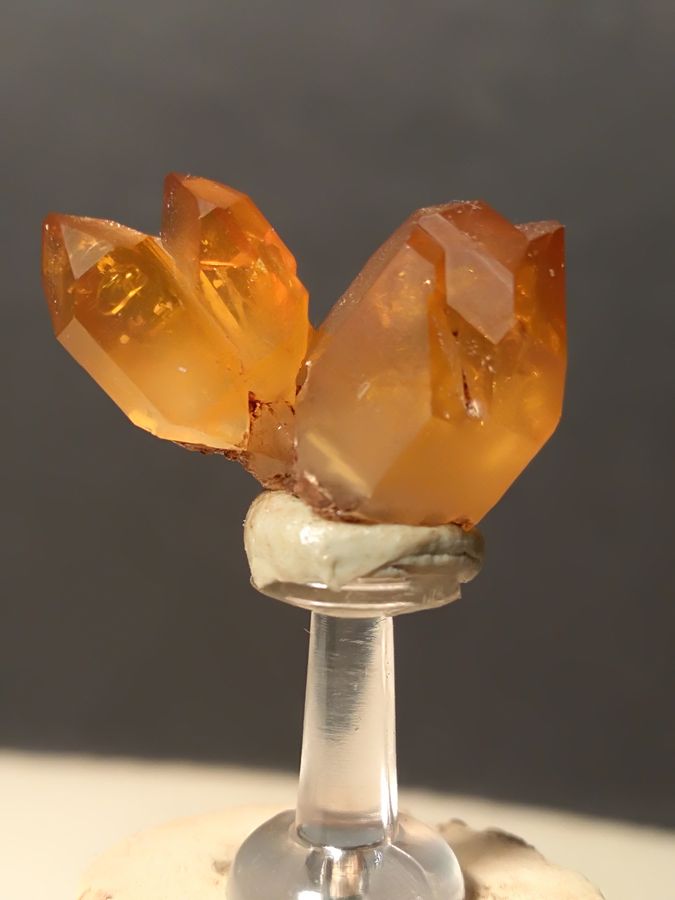
|
| Mineral: | Quartz |
| Locality: | | Grosseto Province, Tuscany, Italy |  |
|
| Dimensions: | 4 cm |
| Description: |
| Oriented overgrowth starting from the base. |
|
| Viewed: |
13420 Time(s) |
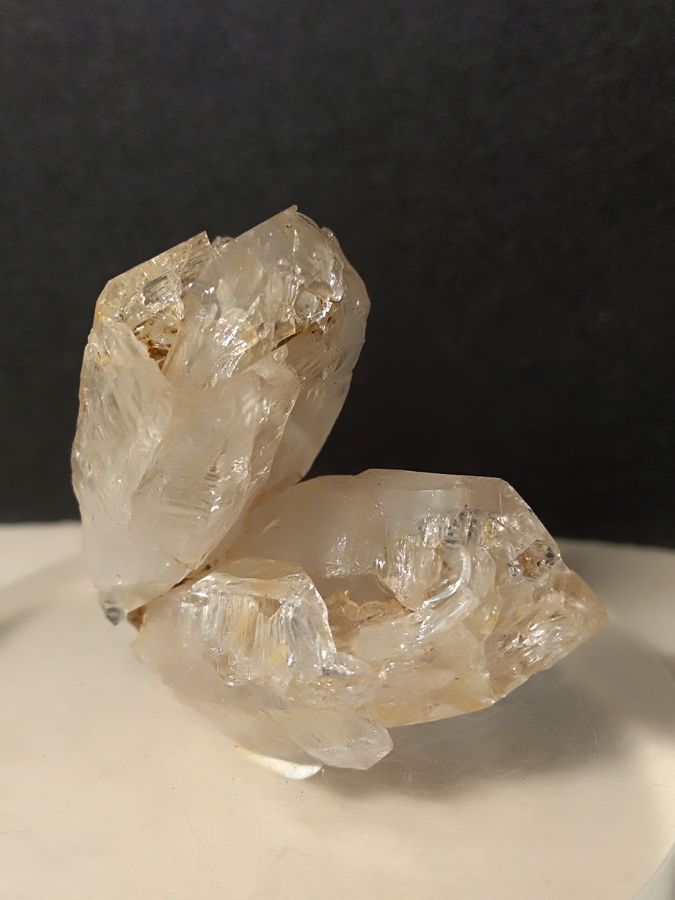
|
| Mineral: | Quartz |
| Locality: | | Grosseto Province, Tuscany, Italy |  |
|
| Dimensions: | 4 cm |
| Description: |
| A mere syntaxy or a sceptered/capped quartz? |
|
| Viewed: |
13419 Time(s) |
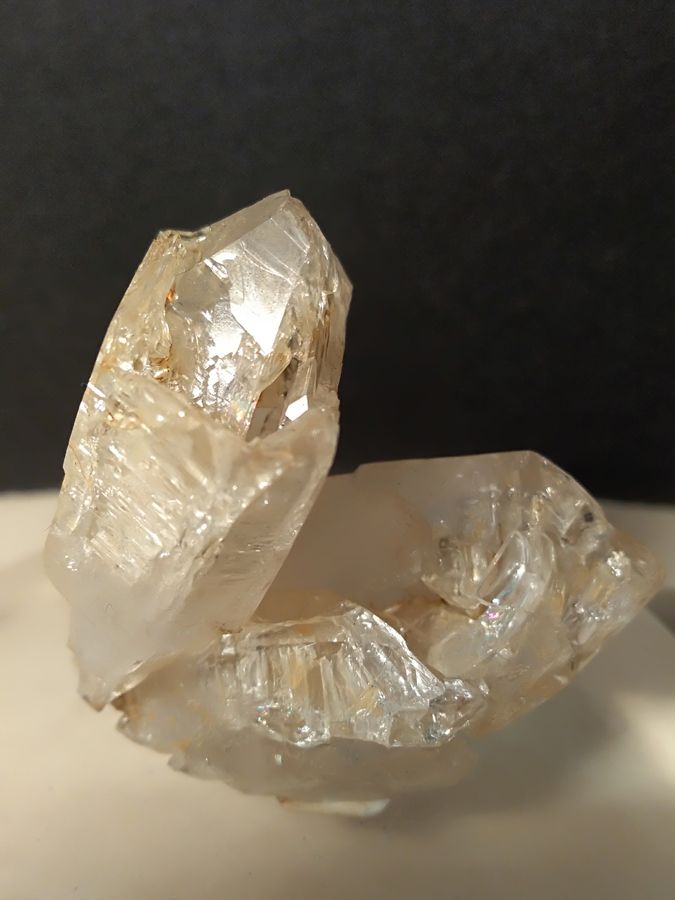
|
|
|
| Back to top |
|
 |
|





